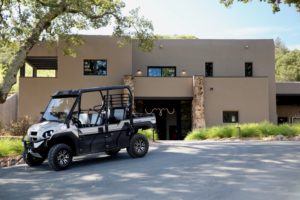
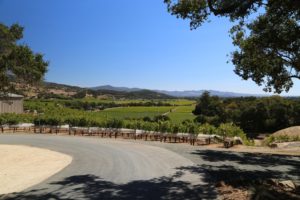
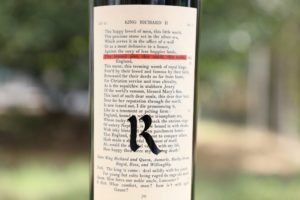 Realm Cellars produced their first vintage in 2002, made at Sherwin Family Winery by founding Realm winemaker Mike Hirby. Later vintages were produced at Laird Estate and Chateau Boswell. In addition to their estate vineyards in the Stags Leap District, Coombsville and on Pritchard Hill, Realm Cellars sources grapes from several other premium vineyards located in Napa Valley including Dr. Crane and To Kalon vineyards.
Realm Cellars produced their first vintage in 2002, made at Sherwin Family Winery by founding Realm winemaker Mike Hirby. Later vintages were produced at Laird Estate and Chateau Boswell. In addition to their estate vineyards in the Stags Leap District, Coombsville and on Pritchard Hill, Realm Cellars sources grapes from several other premium vineyards located in Napa Valley including Dr. Crane and To Kalon vineyards.
Realm Cellars was co-founded by Juan Mercado and investment banker Wendell Laidley. We originally met with Juan with many years ago in what was Realm’s small office in St. Helena. Juan switched careers from hospital administration in the San Francisco Bay Area to working in the wine industry; this career change is one that we venture a guess to say Juan had no regrets about. He is no longer involved at Realm Cellars; he is currently focusing on building his Paso Robles based wine brand, RIISE.
Managing partner, Scott Becker, a grounded and inquisitive individual and thoughtful leader, took ownership of Realm in 2012; today, Scott, along with winemaker Benoit Touquette (who was roommates with Juan from 2007 through 2013) are co-owners of Realm Cellars. In early 2025 Benoit transitioned to a consulting role for Realm. Scott has been involved in the wine industry for many years – first working at Cakebread Cellars and later for Global Wine Partners, (a company that focused on wine investments) and then for Bill Harlan to help develop PROMONTORY.
For many years, Realm did not own vineyards, and sourced from premium vineyards entirely within Napa Valley, a “realm” of properties if you will, spanning from Calistoga to Coombsville. For any vineyards they work with not under their ownership, their relationships with the owner or grower are an integral part of how each vineyard is farmed. Realm employs their own viticulturist who works with the property owners/farmers on a full-time basis.
Today Realm has about 40 acres under vine under their ownership with the potential to plant additional acreage. They carefully monitor and automate certain processes in their vineyards. Some of this is done with the help of the Verdi Block Controller, a low power wireless feed that automates soil moisture readings, controls valves and pumps, detects leaks and breakage and keeps an overall accurate water record.
2011 was the first vintage of Realm for winemaker Benoit Touquette. He is a native of Bordeaux and has a master’s degree of Enology and Chemistry from the University of Bordeaux. 2011 was an ideal vintage for him to start with at Realm; this was a much cooler year than normal in Napa Valley, with rain late in the season and a generally cooler summer followed by a cool fall with early rain. It was a challenging year for many vineyards in the valley. We found these wines stylistically plush, with plenty of flavor and were drinking well in their youth, unlike many Napa Valley 2011s which needed more time in the bottle.
Early on Juan adopted names for each wine which reflect the writings of Shakespeare or characters that appear in his plays.
Those who have followed the Realm story closely over the years know the challenges they have faced. In the space of adversity, they have found resilience, survived a transition in ownership (rare among small brands), built their businesses on calculated risk, all the while maintaining an unwavering commitment to quality and integrity.
A successful business is built upon the details of its operations. Realm is highly focused on the details of all they do from vineyards to winemaking to packaging. Starting in 2017, all Realm Cellars wines display the Prooftag Bubble Tag so that all bottles can be authenticated.
And to eliminate all variability in terms of corks, Realm Cellars began bottling some of their wines in 2020 using Diam’s technical corks. These corks are made from cork harvested from cork trees but are processed differently than natural corks. The cork is washed and ground with non desirable compounds extracted through proprietary technology; the granules of cork are then bound together using a variety of agents including castor oil, beeswax or grapeseed oil. The resulting corks are consistent in how they are made, but even more importantly, devoid of sensory faults. Realm Cellars works with both Diam and Amorim for their cork supplies.
Realm has weathered a number of significant stresses over the years. They were one of the ill-fated wineries to lose wine in a wine warehouse arson fire in Mare Island in 2005; in fact, their entire 2003 vintage was lost in this fire. Those interested in more information about this Vallejo wine warehouse fire can read Frances Dinkelspiel’s book, Tangled Vines: Greed, Murder, Obsession, and an Arsonist in the Vineyards of California. Realm bounced back from this disaster; utilizing strong connections in the valley and access to premium vineyards to recover and grow their production.
A common axiom in wine industry is that is can take at least 10 years to build a small brand. From experience, most small brands do not survive; even Realm was near-bankruptcy in 2011. In 2012 they discovered 250 cases of the 2009 The Bard was mostly tainted with Brettanomyces. They discarded every bottle in disappointment and purchased back any bottles they had already sold. And then in 2013, their 2011 bottlings received much lower than expected scores from wine critics and wine publications. Disappointing and hurtful numbers. But they found persistence in times of hardship and made sacrifices to ensure the continuation of the brand. Finally some good news came; their wines from 2012 received their highest scores to date.
Sometimes wineries transcend winemaking and cross into the realm of lifestyle including art, music and literature; with Realm this has happened in a rather remarkable amount of time considering they were founded in 2002. It is hard to stay energized and creative in this business for a sustained period of time; their team’s continued commitment to detail, precision, creativity, bridging the divide between art and science and constantly striving to better their product each year, is something to be highly commended.
Select Wines
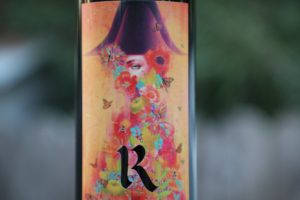
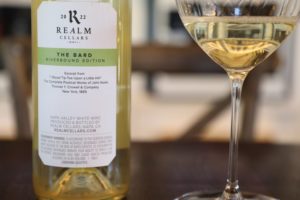 Whites
Whites
Realm’s first ever white wine was a 2010 Sauvignon Blanc sourced from Farella Vineyard. Today they produce two white wines, both Sauvignon Blancs from the Farella Vineyard (Fidelio) and from the Gamble Vineyard (Riverbound). No red wines were produced in 2020 (a significant loss based on their production), but they were able to produce Sauvignon Blanc and a single rosé .
The 2023 Realm Fidelio is 100% varietal from the Farella Vineyard in Coombsville. This wine is pale to medium yellow in color; highly aromatic and saddled somewhere between herbal and tropical, the bouquet sports an initial burst of white florals including of honeysuckle, star jasmine and orange blossom. Additional scents include lemongrass, pineapple, orchard fruits including apricot, yellow peaches and nectarines, and a touch of vanilla and lemon custard. Zippy, bright and formidable, across the palate there are flavors of honeydew melon, mandarin orange, lemon juice, apricot, peach, nectarine and pineapple. Besides the fruit, the backbone of this wine is its fleshy and creamy texture complemented by its high acidity. The intensity of the fruit filled and persistent finish is uncommon for Napa Valley Sauvignon Blanc. This is an exceptional bottling that will play well with any of Napa Valley’s premium producers of this variety including Spottswoode Lail, Vineyard 29 and Melka, among others.
Benoit told us they began using a dedicated white wine press in 2021 which allows them to carefully control oxygen exposure during pressing. Grapes for their white wines are always produced in a special white wine part of their winery at Moonracer Estate in Stags Leap District. Fidelio is a thoughtfully produced wine aged using three different vessels including demi-muid neutral oak barrels, concrete eggs (tartaric acid solution lined, not epoxy) and terracotta amphoras. The name Fidelio is a nod to focusing on red wines but also producing a white wine masterpiece. While Beethoven wrote 9 symphonies, 32 piano sonatas and 16 string quartets, he only penned one opera, Fidelio. Its roots are Latin for ‘faithful’. And for fans of Stanley Kubrick’s films, Fidelio was the password required to access a secret ceremony in his 1999 film, Eyes Wide Shut.
Looking to capture what is in the bottle with a representative label, Realm commissioned artist Sylvia Ji Leonore, a graduate of the Academy of Arts in San Francisco. This playful and colorful label is from a piece simply titled Leonore which is also the name of the main character in Beethoven’s Fidelio.
The 2022 Realm Cellars The Bard Riverbound Edition Napa Valley White Wine (100% varietal Sauvignon Blanc) is medium golden in color; the bouquet initially is shy and withdrawn with initial aromatics are of green apple, honeydew melon and a flinty character. There is also a nuance here that reminded us of the resulting smells of pouring water on hot slate rock that has been warmed by the sun. But give this wine time to evolve in the glass and open and its scents will become more floral and aromatically sweet. It eventually opens to notes of honeysuckle and citrus blossom. It’s flavors are attractive showing apple, pear, kiwi, mandarin and ripe ruby grapefruit on the long flavor filled finish. This wine’s texture is supple and almost saline in its feel which is balanced brightly by an invigorating acidity. The grapes for this wine were sourced from two Sauvignon Blanc clones from two individual blocks within Tom Gamble’s Riverbound Vineyard in Yountville. This wine was thoughtfully crafted using a varieties of vessels including neutral oak foudres, concrete eggs and stainless steel.
Reds
The Bard
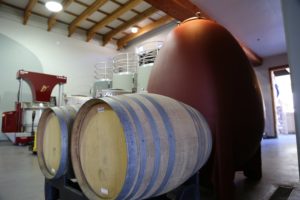
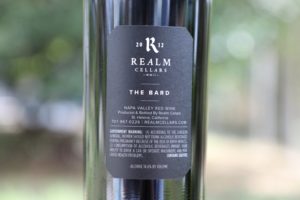 Realm Cellars has produced The Bard since 2003; it is a barrel select blend made from premium vineyards sites ranging from Coombsville in the south to Calistoga in the north. It is an overall expression of Napa Valley; these vineyards are located on both the valley floor and hillsides and encompass a wide variety of exposures. This wine is always led by Cabernet Sauvignon with the trailing varieties being Merlot, Cabernet Franc and Petit Verdot. For reference, the Bard is always one of their later bottlings. Production is sizable, usually around 10,000 cases a year.
Realm Cellars has produced The Bard since 2003; it is a barrel select blend made from premium vineyards sites ranging from Coombsville in the south to Calistoga in the north. It is an overall expression of Napa Valley; these vineyards are located on both the valley floor and hillsides and encompass a wide variety of exposures. This wine is always led by Cabernet Sauvignon with the trailing varieties being Merlot, Cabernet Franc and Petit Verdot. For reference, the Bard is always one of their later bottlings. Production is sizable, usually around 10,000 cases a year.
The label immediately stands out with its prose from Shakespeare’s “King Richard II”. Its a snapshot of Act II Scene I including the line, “This blessed plot, this earth, this realm…” This quote was included on all of the Realm original labels.
The 2022 Realm Cellars The Bard. We tasted this about 3 months post bottling; according to Benoit, the oak profile on both the bouquet and palate will integrate well over the next few months. It is deep ruby and opaque in the glass. Immediately open-knitted upon opening, the captivating, ripe and fruit-forward bouquet offers scents of dark cherry, blackberry pie, plum and boysenberry preserves complemented by sweeter notes including cinnamon stick, clove and mocha. A red-chili spice note is also found deeper in the bouquet. Intensely flavored across the palate, it offers blackberry, boysenberry, blueberry, black cherry and dark plum at the peak of its ripeness with complementary notes of dark chocolate, mocha, espresso, dried herbs and crushed pepper. This bottling features a noticeable structural density; the tannins are still grainy and edgy in their youth with a firm and persistent grip. Lingers with a persistent dusty character and a note of dried tobacco leaf. Benoit calls this a technical vintage – a year one had to really stay on top of things with the brutal heat spike in September.
The 2021 Realm Cellars The Bard is a blend of 83% Cabernet Sauvignon, 7% Merlot, 6% Cabernet Franc, 3% Petit Verdot and 1% Petite Sirah. This wine is deep ruby and opaque in the glass; this darkly colored wine is focused on both freshness and simultaneous ripeness of aromatics. The highly attractive bouquet reveals scents of blackberry, blueberry and boysenberry with other layers of darker baking spices including of cinnamon and nutmeg. And an underlying note of petrichor. The palate is darkly fruited with flavors of cherry, boysenberry, mulberry and black currants. This wine is packed with layers of both intense flavor and structure. The chewy, firm and pixelated tannins are evenly distributed across the palate. Their grippy texture and accompanying rich flavors continue to persist in tandem on the long and exquisite finish. We would like to see where this wine is at in the next 10 or 20 years. Highly age worthy.
The 2019 Realm Cellars The Bard is a blend of 81% Cabernet Sauvignon, 14% Merlot and 5% Petit Verdot. The bouquet is both elegant and fruit driven. Bright fresh and lively, the bouquet offers aromas of plum, blackberry, boysenberry, mulberry along with lavender and licorice. The fruit here smells like it was just harvested. On the palate there are flavors of plum, blackberry, Persian mulberry, and boysenberry. The focus is clearly on the fruit with the oak a complementary character. Lingers with a note of dried tobacco leaf. This wine shows a freshness 5 years post vintage. Balanced out of the gate. Densely packed, its texture sports a gravelly and grainy character which outlasts the fruit on the finish. This is a standout vintage of the Bard and has loads of life ahead of it still.
The 2012 Realm Cellars The Bard is a blend of 95% Cabernet Sauvignon and 5% Petit Verdot. This wine is dark ruby in color; the aromatics smell like what we associate with home (Napa Valley); this is even more relevant considering we are drinking this in Thailand during our annual winter break from our work on the Napa Wine Project and this is the only wine we have tasted in two months. What shows immediately is how much fruit is still on both the bouquet and the palate 11 years post vintage date. This bottling offers scents of ripe blackberries, dark plum and old cedar wood. Let this wine breathe; the aromatics become a little sweeter as it opens including of fresh rose petals, caramel and toffee. The tannins are very supple, featuring a light granulated character along with an almost creamy texture. Dark fruit and dark spices accompany, including a woodsy note, cloves and lingering subtle hint of dried tobacco leaf. Initially, one can feel warmth of the alcohol deep on the finish but after a few sips this goes away.
The 2011 Realm Cellars The Bard. The bouquet quickly reveals floral aromas including pleasing notes of violets along with black currant. A darker spice component shows mid palate through to the finish. Lasting for quite some time, with both fruit and texture. The tannins are firmly gripping, perhaps surprising from a vintage in Napa Valley which tended to be more feminine in character. We would love to try this again 10-15 years post vintage.
Houyi
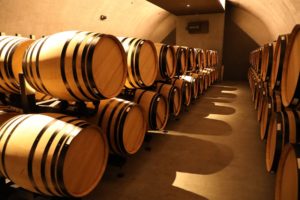
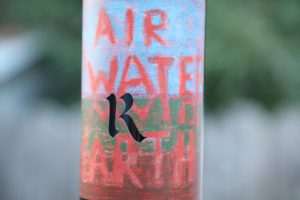 The 2022 Realm Houyi Cabernet Sauvignon is 86% Cabernet Sauvignon, 12% Cabernet Franc and 2% Petit Verdot. This wine is deep ruby, with purplish hues and very much opaque. The bouquet offers a union of both baking aromas and darker fruits including milk chocolate, mocha, espresso, pipe tobacco, lilac, lavender and smoked sage accompanied by blackberry, dark cherry and boysenberry preserves. The aromatics became even nicer on day two. The juicy, ripe and intensely flavored palate offers notes of boysenberry, ripe blackberry which reminded us of our childhood, ‘grazing’ at the edge of blackberry thickets in mid summer, dark cherries and a hint of caramel and dark chocolate. Already balanced for such a young wine, it shows well in its youth, at only two years post vintage. And by this we mean it is saddled perfectly between acid, flavor and texture. Sports a lovely tension; the grainy tannins linger with a broad based and firm grip. Both flavor and texture parallel each other on the extended finish. Ultimately the tannins, a lasting note of cedar, tobacco spice and dust outpace the fruit.
The 2022 Realm Houyi Cabernet Sauvignon is 86% Cabernet Sauvignon, 12% Cabernet Franc and 2% Petit Verdot. This wine is deep ruby, with purplish hues and very much opaque. The bouquet offers a union of both baking aromas and darker fruits including milk chocolate, mocha, espresso, pipe tobacco, lilac, lavender and smoked sage accompanied by blackberry, dark cherry and boysenberry preserves. The aromatics became even nicer on day two. The juicy, ripe and intensely flavored palate offers notes of boysenberry, ripe blackberry which reminded us of our childhood, ‘grazing’ at the edge of blackberry thickets in mid summer, dark cherries and a hint of caramel and dark chocolate. Already balanced for such a young wine, it shows well in its youth, at only two years post vintage. And by this we mean it is saddled perfectly between acid, flavor and texture. Sports a lovely tension; the grainy tannins linger with a broad based and firm grip. Both flavor and texture parallel each other on the extended finish. Ultimately the tannins, a lasting note of cedar, tobacco spice and dust outpace the fruit.
The 2021 Realm Cellars Houyi is deep ruby in color; on the bouquet there are aromas of dark chocolate, baking spices including clove, cardamom, milk chocolate and vanilla. These secondary scents show even more than the fruit at this age. And there are additional scents of blackberry, boysenberry, lavender and lilac. Ripe but also bright across the palate, it is a union of flavors featuring both fruit and barrel influence include blackberry, boysenberry, dark plum along with cinnamon stick, Graham cracker and dark chocolate. The texture of tannins show consistently on the Houyi bottlings; they are lightly grainy, gravelly but never dominate the mouth feel. Their presence lingers with a lightly dusty and chalky character, especially noticeable in this bottling.
The 2019 Realm Cellars Houyi is deep ruby and nearly opaque in the glass; the bouquet is focused more on darker fruits than red fruits including plum, blackberry and cherry with a floral component. This is is a consistent character regardless of vintage from this property; in this bottling it is expressed as lavender and sage. The bouquet is a little riper than some of the other vintages we have had of Houyi. And the palate is similar with flavors of blackberry, Santa Rosa plum, dark chocolate, blackberry and dark cherry. The tannins are lightly grainy and sport a gravelly texture. This wine offers a brightness, balance and freshness not always associated with Pritchard Hill. Both texture and flavor parallel each other for some time on the extended finish.
The team at Realm first discovered the works of Venezuelan born but Los Angeles based Luchita Hurtado, at Hauser & Wirth gallery in the Arts District in Los Angeles, a space we have visited several times. Incidentally this part of Los Angeles used to be primarily planted to vineyards. Reference the book, Los Angeles Wine, A History from the Mission Era to the Present for more details. In 2022 they introduced her painting on the Houyi Cabernet Sauvignon; the piece is titled, Air Water Earth paying homage to the balance of the natural world. Luchita was listed in Time 100’s most influential people of 2019; she died the following year at age 99.
Farella
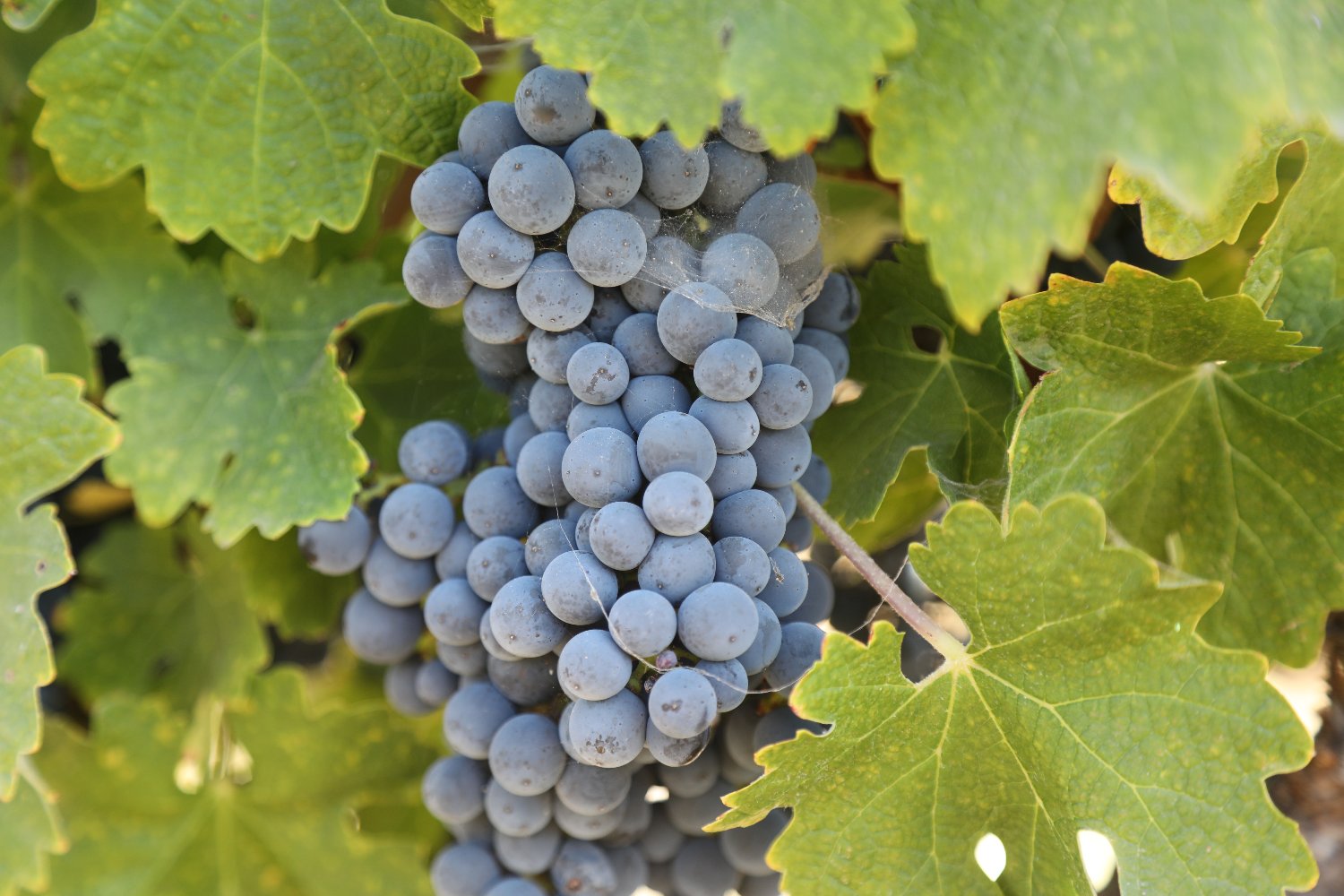
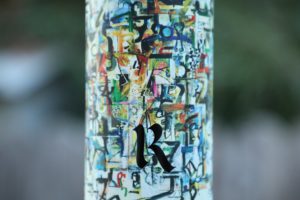 The Farella Vineyard is managed by the team at Realm through a long term lease; this vineyard was founded by Frank Farella who purchased this 56-acre property in 1976. His son, Tom Farella is a long-time grape grower, who is now growing wine grapes in the Nevada desert, and managed Farella Vineyard for more than 20 years. Realm Cellars has sourced grapes from this vineyard since their early years after Juan happened to see an ad in the Napa Register listing grapes for sale. The Farella’s sold grapes to Robert Mondavi for many years but after the Mondavi sale to Constellation, Farella held back the fruit. Juan’s timing was ideal; grapes from this vineyard are the backbone of several of Realm’s wines including the Tempest. The only producer Realm now sells grapes to from this vineyard is Farella.
The Farella Vineyard is managed by the team at Realm through a long term lease; this vineyard was founded by Frank Farella who purchased this 56-acre property in 1976. His son, Tom Farella is a long-time grape grower, who is now growing wine grapes in the Nevada desert, and managed Farella Vineyard for more than 20 years. Realm Cellars has sourced grapes from this vineyard since their early years after Juan happened to see an ad in the Napa Register listing grapes for sale. The Farella’s sold grapes to Robert Mondavi for many years but after the Mondavi sale to Constellation, Farella held back the fruit. Juan’s timing was ideal; grapes from this vineyard are the backbone of several of Realm’s wines including the Tempest. The only producer Realm now sells grapes to from this vineyard is Farella.
The vineyard is located in Coombsville, a more temperate part of the valley; this region is cool, but not as cold as nearby Carneros which is closer to the San Pablo Bay and less protected geographically than Coombsville. The vineyard is on a hillside and on a clear day one can see the outline of San Francisco’s skyscrapers far to the south. The vines were planted in 1979 and are the oldest vines Realm sources from. Nearby neighbors include Far Niente, including the vineyard used for Far Niente’s Dolce production, Bydand Estate, Meteor Vineyards and Rewa Vineyards.
The 2022 Realm Farella Vineyard is 95% Cabernet Sauvignon and 5% Merlot; this wine is deep ruby and opaque with an amaranthine rim. The bouquet offers an arrangement of florals including lilac and lavender with a note of sage and dark chocolate. Its fruit is primarily dark with notes of blackberry, boysenberry, Coral cherries at the peak of their ripeness, black currant and Santa Rosa plum. Extracting everything this vineyard offers, and mirroring the bouquet in terms of fruit, the juicy and intense palate reveals flavors of blackberry, boysenberry, blueberry and dark plum. There is plenty of power here in terms of fruit, yet it is also highly balanced right out of the gate in regards to texture and acidity. The tannins showcase the Realm texture, are lightly grainy and gravelly but never dominate. Their presence lingers for some time with a gentle grip and a note of dried tobacco leaf before eventually letting the fruit take the lead and finishing. During this particular year, sorting was an important component of cellar work based on the sustained and high heat spike experienced around Labor Day Weekend. Through sorting, approximately 30% of the grapes were discarded. This is an exceptional wine which doesn’t showcase the late season challenges of the vintage. Of all the the red wines we have tasted from this vintage from Napa Valley, this bottling is towards the top of the list.
The Farella Vineyard bottling was 100% varietal until 2019; vintages now include a small percentage of Merlot. The colorful and dizzying label is the work of Ethiopian born and Berkely based artist Wosene Worke Kosrof. Titled, Heart of Dance, its visual feel is filled with dance, music, movement, and stories that seemingly need help deciphering.
The 2011 Realm Cellars Farella Vineyard Cabernet Sauvignon (100% varietal) is stylistically more Bordeaux in style than a typical up valley Cabernet Sauvignon. And this is a factor of both cooler site and the abnormally cool vintage. The bouquet sports a sweet note of fruit, almost candy-like in quality that envelops the glass (uncommon for this vintage), along with earth notes. The palate is perfectly in balance, always a characteristic of this site, is elegant and features a long-lasting finish. This is a highly cellar worthy wine.
Farella Vineyard
Dr. Crane
The 2011 Realm Cellars Dr. Crane is from the vineyard of the same name. This historic site was first planted in 1858 by San Francisco surgeon Dr. Beldon Crane; he was one of the earlier vineyard pioneers in Napa Valley. This site is also tied to the railroad tracks that were built in Napa Valley. These tracks used to run to Calistoga, but now terminate on the grounds of Charles Krug Winery north of St. Helena. This is the same track that the Napa Valley Wine Train uses. A quarry near the vineyard supplied the rock that was used as the base for these railroad tracks. The historical significance of this vineyard does not stop here; this was St. Helena’s little Chinatown in the 1920s during the time the California Pacific Railroad was being built. The property then served as a campsite for the Chinese workers.
The 2011 Realm Cellars Dr. Crane is 97% Cabernet Sauvignon and 3% Petit Verdot. The balance on this wine is truly remarkable. It straddles a fine line between elegance and being robust. The bouquet is lively; its aromas are refined and appealing showing both red and black fruit, mineralities and a hint of baking spice and black licorice. Well-structured tannins anchor an extended finish. The beautiful label was designed by a Chinese artist – the same artist that created the Ad Coeulum label for Napa Valley based Lanthanide Wines.
Beckstoffer, Dr. Crane Vineyard
Moonracer
An exciting wine for Realm is Moonracer; this was the first wine bottled under Realm from their Stags Leap property. This special wine is one that collectors will want to seek out from their allocation list. And the label for this wine is remarkable; it is computer generated from data that Realm provided for an algorithm based on vineyard information including temperature, winds etc. This algorithm along with the creative input from their graphic designer Sergio Albiac remarkably creates a unique label for every single bottle of wine.
The 2021 Realm Cellars Moonracer is 100% varietal Cabernet Sauvignon; it is deep ruby and opaque and like the other Moonracer vintages we have tried, this bottling is not lacking in color. The bouquet offers a minerally character that is immediately noticeable with aromas of slate rock and dust accompanied by blueberry, blackberry, dark cherry, boysenberry, Persian mulberry and as it opens, a note of mocha. We love the aromatic interplay between fruit and earthiness. On the palate there are flavors of blackberry, boysenberry, milk chocolate and cocoa powder. The texture feels dense; the tannins are tightly packed at this age. They linger with a persistent grainy and gravelly character. The finish is earthy. This wine represents the vintage well, offering both power, freshness and structure. It is clearly built to age.
The 2019 Realm Moonracer is 98% Cabernet Sauvignon and 2% Merlot. This wine is deep ruby and opaque. On the bouquet there are aromas of plum, dark cherry, blackberry, boysenberry with a little more influence of oak including cinnamon stick, cardamom, bakers chocolate with a light layer of old cedar box. Smells elegant. This wine offers flavors of bramble, boysenberry, blackberry, plum and purple berries. Shows a little more fresh, especially on the palate than the 2018, despite being a year younger. The tannins are rounded and are the most plush and pillowy textured of the three vintages. They persist with a long-lasting dusty and chalky character. Both texture and tannins parallel each other on the extended finish. Age worthy. And it is showing in a sweet spot 5 years post vintage.
The 2018 Realm Moonracer is 90% Cabernet Sauvignon, 7% Merlot and 3% Petit Verdot. This wine is deep ruby and opaque; the aromas offer aromas of petrichor, lilacs, lavender, raspberry, Santa rosa plum, blueberry, and red cherry. As the aromas evolve, they express a note of dried tobacco leaf. On the palate there are flavors of blackberry, boysenberry, blueberry and dark plum. The tannins are grainy, with a long-lasting granular character which outpaces the fruit on the extended finish. One can feel the density of their textural grip. This wine was aged in nearly 100% new French oak barrels.
Hartwell XX
The 2019 Hartwell XX, Stags Leap District Cabernet Sauvignon is 100% varietal; this wine is deep ruby, dark and opaque. The bouquet reveals scents of lilacs, violets and lavender, a five-star spice with a dried herbal note including sage. This wine needs time in the glass; it continues to evolve with additional scents of mocha, expresso and toasted cedar – but is in no way woodsy. This is a particularly enjoyable wine to sniff based on its aromatic depth and its ability to evolve rather remarkably over time. Its fruit core includes blackberry, dark plum, and boysenberry. And on the palate, there are darker fruited flavors, leading with plum, supported by black cherry, blackberry, and mulberry. The finish lingers with a note of dark chocolate and toasted cedar. The tannins have years ahead of them until they fully resolve. Right now their texture is dusty, gravelly and still a bit edgy, 5 years post vintage.
Hartwell XX is also made from the tiny block planted in 1986, located on the uppermost reaches of their property. The first vintage Realm produced of this wine was in 2018; it was already vinified and along with the 2019 vintage was included in the sale of the two parcels Realm purchased from the Hartwell’s in 2020.
The Tempest
The Tempest Napa Valley Red Wine is typically a blend of Merlot, Cabernet Sauvignon and Petit Verdot with the dominant variety always being Merlot. This was the first wine Realm released in 2002.
The 2021 Realm The Tempest is 75% Merlot, 20% Cabernet Sauvignon and 5% Malbec. This wine is deep ruby and opaque; the bouquet is driven by both its floral elegance and its fruit. Its aromas are of lilacs, violets, sage, bittersweet chocolate, dark raspberry, boysenberry, blackberry and blueberry. As this wine evolves in the glass additional scents are expressed including coffee grinds and espresso. This is a fresh and juicy take on a Merlot dominated wine with flavors including dark chocolate, blackberry, black licorice, mocha and cocoa powder. The tannins are well tumbled, lingering with a dusty, chalky and creamy character. Also savory, it offers a lingering note of dried sage and mint on the finish. This bottling always showcases Merlot’s depth of character, from vineyard sites throughout Napa Valley. And it is always aged in a variety of vessels including amphorae, concrete eggs and French oak.
Falstaff
The 2011 Realm Cellars Falstaff is 60% Cabernet Franc and 40% Cabernet Sauvignon. Immediately engaging, the bouquet sports tobacco, chocolate and dark fruit. The tannins are felt more up front on the palate rather than on the finish; the wine shows more grape tannins than oak tannins. The mouth feel is soft and rounded with a finish that offers plenty of fruit as well as additional notes of toasted oak.
To Kalon
With a vintage of To Kalon as your first wine “out of the gate” in 2002, one sets the bar high. Less than 20 producers source fruit from the Andy Beckstoffer managed part of this sizeable and historically significant vineyard. In 2002 it was extremely difficult to get grapes – today it is even more challenging with less than 20 producers currently sources grapes from the site. In 2002, Andy Beckstoffer took a chance on Realm and other producers with the expectation that the site would make great wines regardless of who was making the wine.
The 2011 Realm Cellars To Kalon shows an opulent nose: the palate showcases a powerful flavor profile, plenty of structure and bright acidity. The placement of the tannins is interesting and somewhat surprising – showing more on the front and sides of the palate rather than entirely on the finish. Still, it is a robust wine; black fruit dominates along with tobacco, cassis and a skosh of toasted oak on the finish. This is a robust wine which is simultaneously balanced, showcasing a seamless quality running across the length of the palate.
To Kalon Vineyard
Realm Moonracer Estate
At the end of 2015 Realm Cellars acquired Hartwell Winery including 20 acres of land and the existing caves in Stags Leap Wine District on what is called Wappo Hill. Benoit was very familiar with this property having made Hartwell’s wine beginning in 2004 and oversaw their vineyard management since 2008. This is a prominent neighborhood with vintners Jean-Charles Boisset and Gina Gallo and Rob Mondavi as some of their neighbors. Since the acquisition, Realm Cellars has transitioned some of their wine making operations to this property.

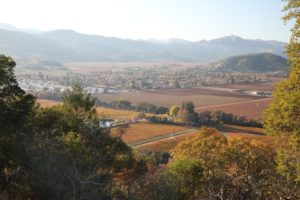
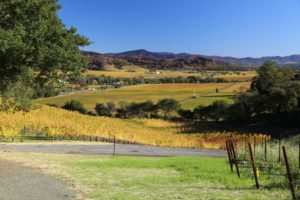 From 2016 through 2021, California and Napa Valley were suffering from extreme drought conditions. With production increasing they realized they weren’t able to rely on the county for all their water needs. In fact, during parts of the year they were trucking in several hundred thousand gallons of water a month. Later they purchased a water delivery truck which also doubles as needed for firefighting. A reservoir with a capacity of 7.5 million gallons had been built on the property during the Hartwell’s ownership – but the ability to capture more rainwater was needed. And to mitigate localized flooding on the property during significant rain events (the old winery lab used to flood), natural flow channels on the property were funneled into the reservoir and a tunnel was drilled, now storing water under one of the hillsides. Additionally a 900 foot well was drilled providing an additional water backup.
From 2016 through 2021, California and Napa Valley were suffering from extreme drought conditions. With production increasing they realized they weren’t able to rely on the county for all their water needs. In fact, during parts of the year they were trucking in several hundred thousand gallons of water a month. Later they purchased a water delivery truck which also doubles as needed for firefighting. A reservoir with a capacity of 7.5 million gallons had been built on the property during the Hartwell’s ownership – but the ability to capture more rainwater was needed. And to mitigate localized flooding on the property during significant rain events (the old winery lab used to flood), natural flow channels on the property were funneled into the reservoir and a tunnel was drilled, now storing water under one of the hillsides. Additionally a 900 foot well was drilled providing an additional water backup.
With heat spikes becoming more prominent including a sustained extreme spell in 2022 centered around Labor Day weekend, precision misters were installed. During high periods of heat these spray fine droplets over the vines, evaporating before they reach the ground, resulting in lower temperatures.
In October 2020 REALM purchased two additional parcels from the Hartwell family including the coveted knoll at 550 feet elevation with a two-acre vineyard planted in 1986 from cuttings acquired from Grace Family Vineyard (Bosche clone). These are the oldest vines on the Moonracer estate. And perched on this hill is the Hartwell family home and barn which used to house Hartwell’s personal collection of private cars. Prior to the Bob & Blanca Hartwell purchasing this property in the mid 1980s, it used to be owned by Charles “Harry” See, Founder of See’s Candy and also the namesake of what is now known as the See clone of Cabernet Sauvignon.
The inaugural vintage of Hartwell was in 1990; early vintages were produced at tiny Grace Family Winery north of St. Helena. Visitors to the property prior to Realm’s ownership may remember the cypress tree lined driveway and possibly seeing some of the Scottish Highland cattle that used to roam part of the property. Besides Benoit, other winemakers who were involved in the production of the Hartwell wines included Andy Erickson and Michel Rolland.
Since acquiring the property, Realm has significantly, thoughtfully and carefully invested in its vineyards, winemaking and hospitality spaces. During our most recent visit to the property in late 2024, it felt like as Scott described, “the intermission” where the initial phases have been completed, waiting to catch their breath before welcoming the next phases of development. A replant was completed of most of the surrounding vineyards, additional caves were drilled and the construction of what is called, Whisky Hotel was completed including offices and winery production spaces.
Additional plans call for moving the entrance to the property slightly south of the existing driveway, taking advantage of a ridge leading to Whisky Hotel, drilling several more underground cave water storage tunnels, using the cave spoils to fill in a block where additional grapes will be planted, building a grape vine nursery/greenhouse on top of Wappo Hill and remodeling the original winery.
Whisky Hotel is the name of the building that houses their offices, white wine production and an underground tunnel filled with water. Its name was used as a code name while discussing purchasing the Realm property in public spaces. Arguably the highlight of the Whisky Hotel is their white wine production facility. A simple visual greets visitors, painted separately on a door and a roll-up door on the exterior, that of a Japanese fairy tale involving Urashima Tarō, a fisherman who spots a turtle entangled in a fishing net; the turtle asks for help. The fisherman kindly obliges, and to repay him the turtle offers to transport the fisherman on his back to his underwater kingdom. The story behind this visual perfectly parallels the interior of the production space.
In 2019 Realm commissioned graffiti artist Victor Reyes to paint the interior; electricity had not been installed to the space so Reyes worked with portable shop lights, and a scissor lift for 21 straight days – starting around 6pm and working all night until 6am. His resulting creation, called the Cave of Dreams is a colorful and vivid geometric piece, somewhat Picasso like. In 2023, Realm commissioned Japanese-American tattoo artist Taki Kitamura and his wife Molly Kitamura to paint the entrance to the winery, a space housing their tanks and other winemaking equipment. Their resulting work is a myriad of underwater creatures and other marine life scenes portrayed not only on the walls of this space but also on a number of permanent pieces of equipment including the primary electrical box, the roll-up door, outlet covers and electricity panels.
After a visit to this space, the interior of most wineries seems so visually boring in comparison. This space is whimsical, light and bright – and it affects your mood in a very positive manner. One walks out of here feeling particularly happy.
Paying homage to Realm’s philosophy respecting those in the industry who came before them, a memorable statue is located near the external stairway up to offices at Whiskey Hotel. This sculpture is titled, Standing on the Shoulders of Giants.
White wine production, Whiskey Hotel
A small portal within the original cave stores their amphorae vessels. These are produced in Tuscany by the Manetti family, owners of Manetti Gusmano & Figli furnace. The family has worked with clay for 8 generations and are responsible for providing the tiles in the restoration of the floor of the Duomo and the Botticelli room in the Uffizi Gallery (both located in Florence). Making these vessels is a lesson in patience combined with exacting knowledge passed down from generation to generation. Each vessel (they can be produced in different sizes) takes up to 4 months for one person to create by hand, with the clay slowly added. It is a grey color prior to its ‘firing’ in their large oven, at which point it takes a reddish brown color. Only a very limited number of these are produced each year (usually 100-110). We began seeing select wineries in Napa Valley start to use these around 2013/2014.
Realm has found the amphorae contribute an important textural character to the wines, softening tannins and are especially usefully for particularly highly tannic vintages.
Manetti Gusmano & Figli, Tuscany
Visits are for serious wine enthusiasts and collectors and usually last up to two hours. These include stops in their uppermost vineyard, a visit to the wine production space at Whisky Hotel followed by a sit down tasting. An educational component is always part of a tasting, tailored to the interest of the guests. Visits are never scripted and always flow at a relaxed and casual pace.
Realm Houyi Estate
In mid 2022 Nine Suns Winery and the Houyi Vineyard on Pritchard Hill were purchased by Realm Cellars although Realm began overseeing the farming of the site several months prior. This acquisition included the entire property, physical winery, the Nine Suns and Houyi wine brands and remaining inventory. An in honoring the previous ownership, Realm Cellars kept the name Houyi Estate. Realm had been well-acquainted with Houyi Estate having first purchased grapes from the site in 2013. Previous owners, the Changs, including Jason and his wife Flora were extremely involved in building and operating the winery. Flora continues to operate her own brand Plinth and continues to source grapes for Plinth from the Houyi Vineyard, the only producer Realm Cellars still sells to from the estate.
The Chang Family purchased this property in 2010 from developer and majority owner of the San Diego Chargers football team, Alex Spanos. The Chang’s three children (Aimee, Jason and Chris) were all instrumental in the development of the property, winery and brand.
This 40-acre property is planted to 23 acres of vines (HOUYI Vineyard) including all five primary Bordeaux red varieties; the majority to Cabernet Sauvignon and Cabernet Franc with small blocks of Merlot and Petit Verdot. The vines are carefully managed including flagging vines having too little or too much vigor and treating them individually in terms of pruning, water and soil amendment needs. As with a number of their Pritchard Hill neighbors, the soils here are extremely rocky and iron rich red in color. Vines were already here when the Chang’s purchased the property; the oldest vines on site date to 2004. After purchasing the property, the family initially sold the grapes to several premium producers; the first wine they produced was from the 2011 vintage (200 cases) but elected not to release it. Their first commercial bottling as Nine Suns was a 2012 Cabernet Sauvignon.

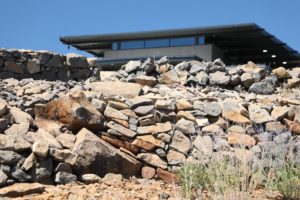
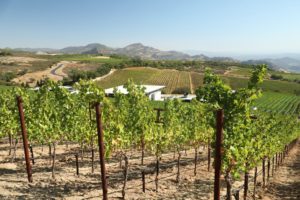 The name Nine Suns was carefully chosen to honor the Chang’s heritage. Nine Suns is part of a Chinese legend (often told to children) where 10 individual suns would rise and set each day taking turns doing so. One day all ten suns rose at once and the earth soon suffered due to the heat. Houyi, a mythological Chinese archer was given the task of eliminating the suns – he successfully shot down 9 suns leaving only one.
The name Nine Suns was carefully chosen to honor the Chang’s heritage. Nine Suns is part of a Chinese legend (often told to children) where 10 individual suns would rise and set each day taking turns doing so. One day all ten suns rose at once and the earth soon suffered due to the heat. Houyi, a mythological Chinese archer was given the task of eliminating the suns – he successfully shot down 9 suns leaving only one.
The idea behind building walls around the parking lot is aesthetically pleasing but it also serves a purpose. Rather than initially seeing the great views from the parking lot – guests are meant to first enjoy the views after they walk up to the hospitality center.
The winery itself was well designed with significant thought behind some of the details and appearance. Juan Carlos Fernandez (architect for Cade Winery) was the primary architect for the winery, hospitality building and residence. The first vintage of Nine Suns entirely crushed and fermented at the winery was in 2015. Realm Cellar’s first harvest at the winery was in 2022. And their efforts in building out the winery to match their own needs was impressive with its operations closer resembling production at contemporary wineries in Bordeaux than in perhaps Napa Valley.
They imported primarily all the wine making equipment from France including sleek looking small-lot tanks manufactured by Gorron, France based Serap Industries (also a prominent tank manufacturer for the dairy industry). Most catwalks in wineries in Napa Valley are made from aluminum; the one here is made from stainless steel. Stainless steel vats on wheels deliver the grapes via gravity to tanks below. From the catwalk employees have easy access into the tops of the tanks.
A space looking down on winery operations will be converted into a tasting area with part of the walls replaced by windows so one will simultaneously be able to see the winery in one direction while in the other have a birds eye view across their vineyards and Napa Valley in the distance.
And learning how quickly fires can impact winemaking from the 2017 and 2020 fires, at all three of their wine production locations, including this one, Realm Cellars maintains numerous 1/4 ton ventilated macro picking bins, with more than enough needed should harvest require a sense of urgency. And they have the cooling space to house larger tonnages until processing in case large tonnages need to be harvested quickly. In addition, misters are installed throughout the vineyard to provide a cooling influence when needed during periods of ongoing high temperatures The misters spray out very fine droplets, keeping the canopy cooler but evaporating before they reach the soil.
Control and cleanliness are arguably two of the most important words in winemaking. Owning and having control of their own wineries has been a game changer; Realm Cellars has had 100% successful fermentations since 2018. The Houyi Estate maintains a dedicated sanitation room where various pieces of equipment are brought to be cleaned. The floors are epoxy, are durable and can be cleaned easily.
The winery features a unique cave for barrel aging. The walls are unlike most caves in the valley in that they are not covered with rough looking shotcrete or gunnite. Rather this was the first winery (and probably the last) to test out a unique cave coating material called Elephant Armor. Texturally it is very smooth and is waterproof but was more challenging and time intensive to coat a cave compared to the traditional methods. Visually it is quite appealing, casting an elegant look to the overall appearance of their cave.
Barrels are on rollers which include built in lights that line up above the bung hole when needed to examine wine within the barrels. And one example of how they pay attention to even the smallest of details, is using screw in barrel bungs rather than the industry standard push in by hand. Using these particular bungs decrease the rate of evaporation slightly.
The majority of their oak barrels were manufactured by Taransaud including several different sizes. And housed within the cave is an ovum, a 200-liter French oak ‘egg’ tank produced by Taransaud. The company only makes 2 of these ‘Ovums’ each year; as a result, they are extremely difficult to obtain. About 30% of their production at this winery is aged in concrete tanks, with the insides lined with tartaric acid solution rather than epoxy. These vessels help preserve the brightness and freshness in the wines. Always looking to fine tune their operations, the winemaking team is testing the effects of their air conditioning on aging including temperature, measuring velocity of flow and wine evaporation.
A single sycamore tree growing in the distance to the south of the winery invites glances. It grows on a former helicopter pad which has been converted into a perfectly perched viewpoint. Both great views of Napa Valley spread out below and the nearby vineyards are part of the visual feast from here.
A small portal within the cave is shaped exactly like a guitar – even down to the gold ‘strings’ embedded in the floor. This room houses iconic wines from not only other Napa Valley producers but from other estates around the world. And this space honors a number of individuals who have been an important part of Realm’s journey; their names are written on gold plaques fastened to the floor.
Realm North
In mid 2024, Realm Cellars began leasing the space on Tubbs Lane in Calistoga known as The Winery at Brasswood, located almost across from the driveway to Envy Cellars. The use the space for both production (it is their dedicated home for producing The Bard wines) as well as hosting visitors for tastings. While tastings are limited at both Moonracer and Houyi estates, Realm North offers more access and availability for tastings. Realm North began seeing visitors for tastings here on October 4, 2024.
Prior to Brasswood’s ownership, this property was the home of Summers Estate, founded in 1996 by Jim & Beth Summers. Beth’s family has a long history in the wine business, she is the granddaughter of the family that owned Mazzola Brothers and Sons in Cucamonga, California in the early 1900s. Jim Summers (Mr. Charbono) who passed away in late summer 2018, founded the winery; he was originally from Kansas (his father was a butcher in a grocery store) who came out to the San Francisco Bay area to pursue his MBA from the University of San Francisco. He left the world of corporate finance to begin Summers Estate.
The wine Summers used to be most known for was their Charbono and the 25-acre property is planted in part to Charbono. A handful of vines on the property are in the 60–85-year-old range.
A large metal building was built over the existing production building, a barn within a barn, and the hospitality building was lifted onto a new foundation and remodeled. It became another production facility for Brasswood during their ownership. Visitors to Summers Winery who visit this winery will no longer recognize the current infrastructure including the old hospitality house which is now a contemporary and elegant tasting salon. The winery and separate hospitality center were designed by Juan Carlos of Signum Architects. Until 2024, Brasswood leased both a majority of the production space and all of the hospitality center to Newton Vineyard after Newton Vineyard’s own winery was destroyed in the Glass Fire of 2020.
Former Summers Estate
The Realm wines are selectively distributed including in local premium restaurants such as the French Laundry, TORC, Bouchon Bistro as well as through their mailing list. Realm’s website is a treasure trove of literary For more information, to request an appointment or join the allocation list, visit: www.realmcellars.com






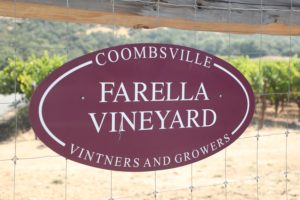

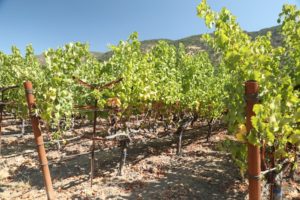
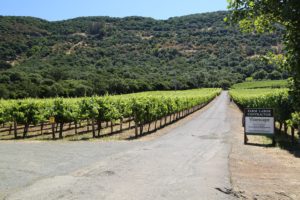
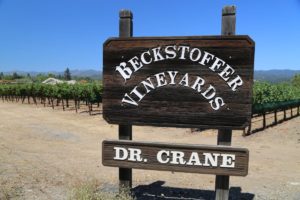
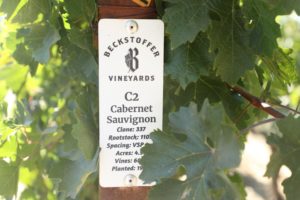
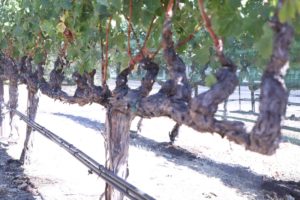

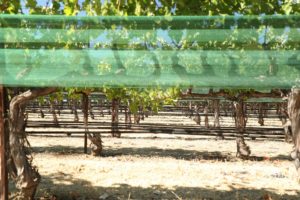
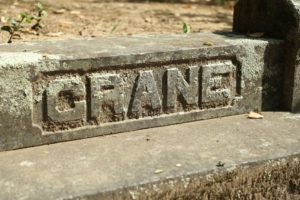
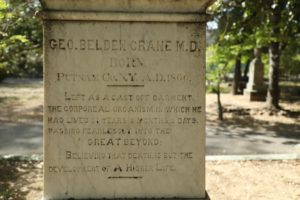
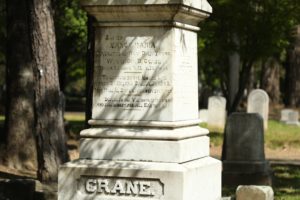
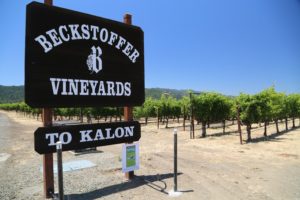
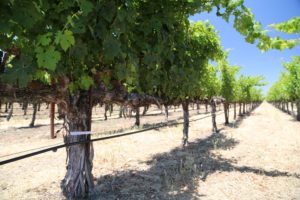
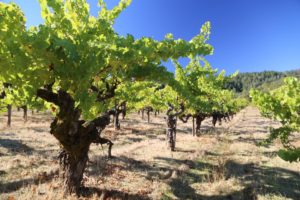
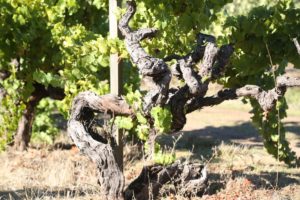
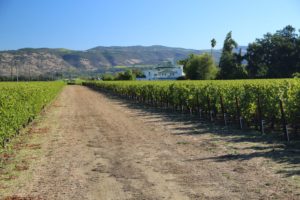
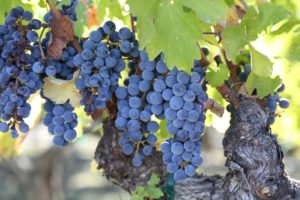
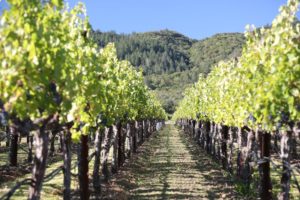
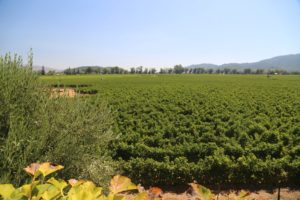


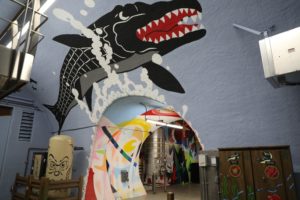
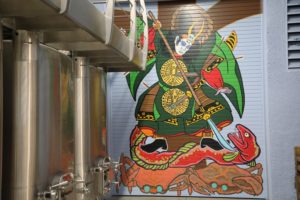


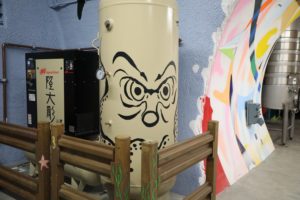
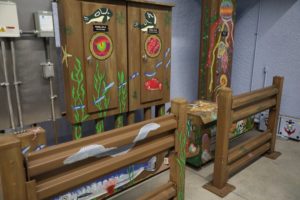

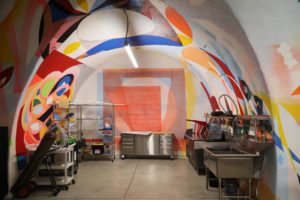
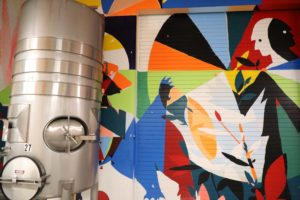

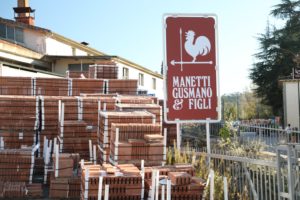
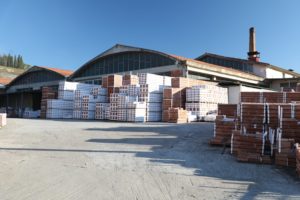
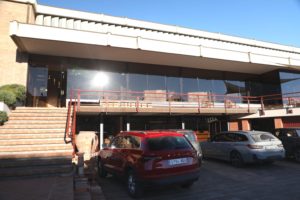
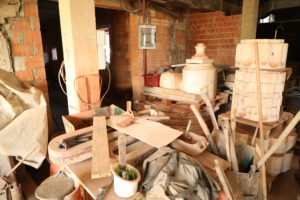



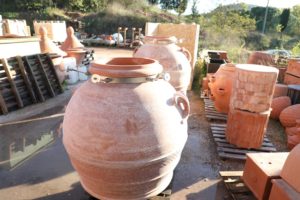



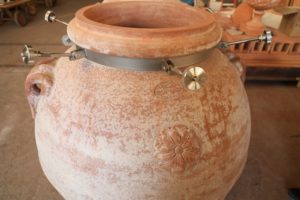
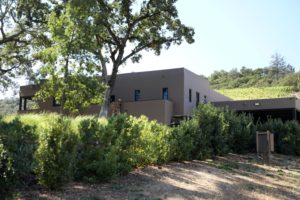
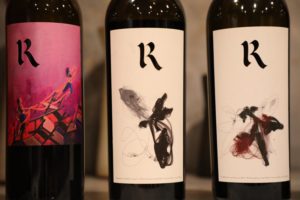
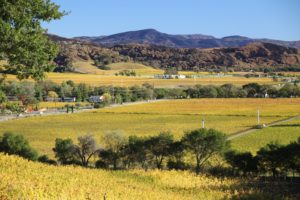
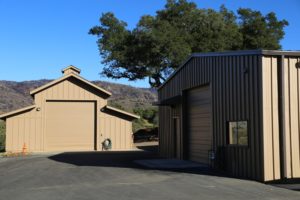
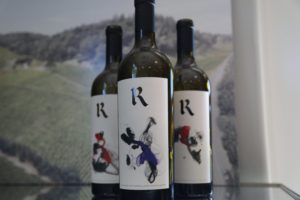
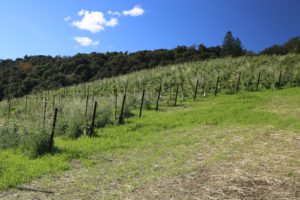
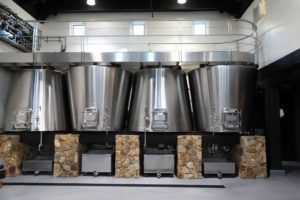
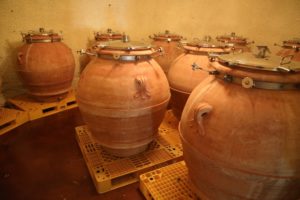
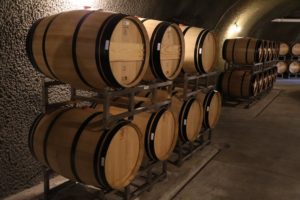
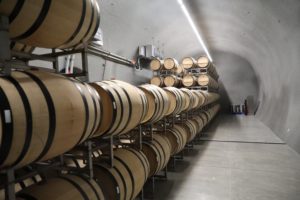


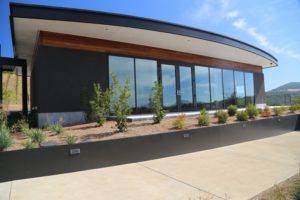
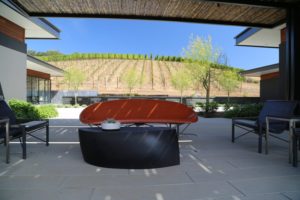


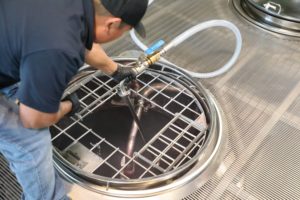
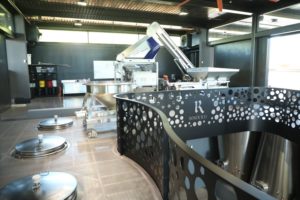
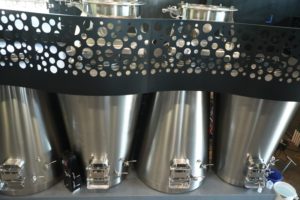
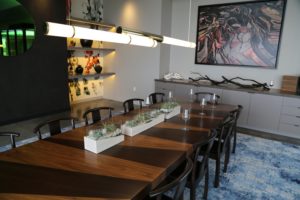
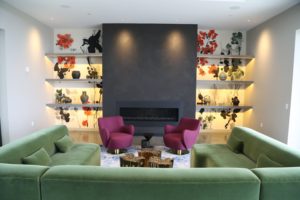
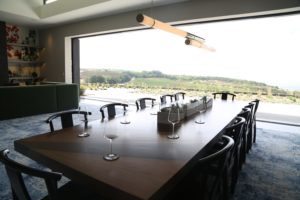
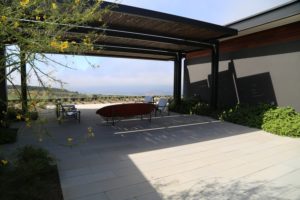
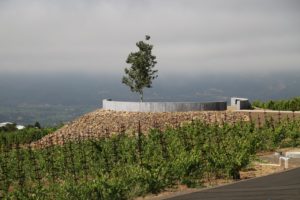
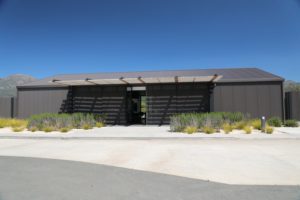
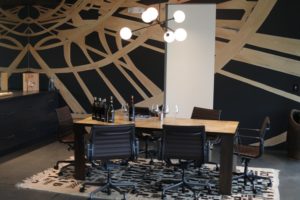

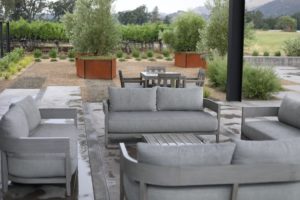
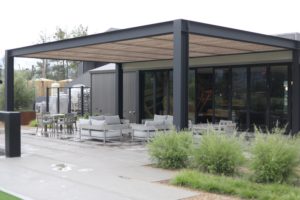
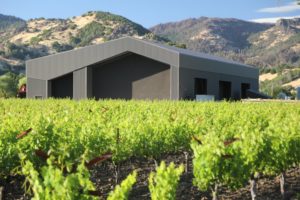
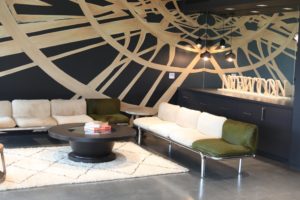
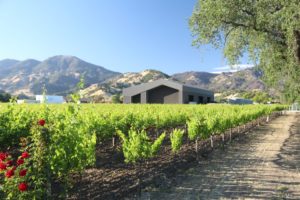
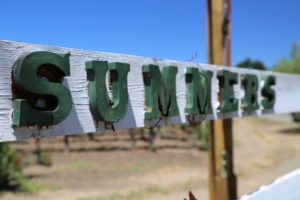
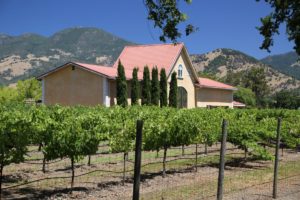
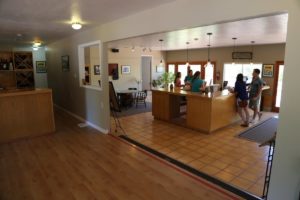
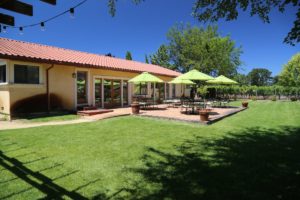
Information on wine sales for personal consumption!
Very helpful review — thanks.
Thanks Patrick – it is exciting to see the development over the years for Realm. And now they have their own winery home – I look forward to revisiting once they have settled in and moved over their operations.
~ Dave